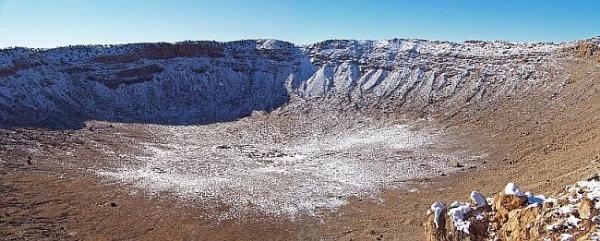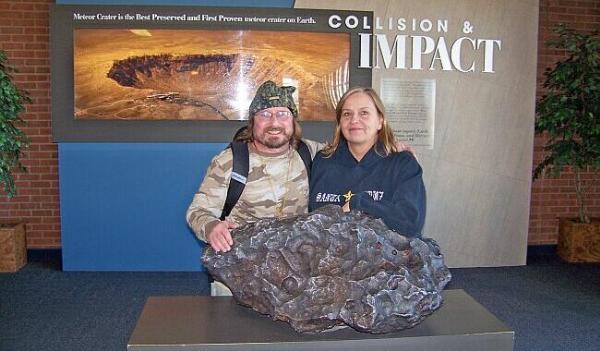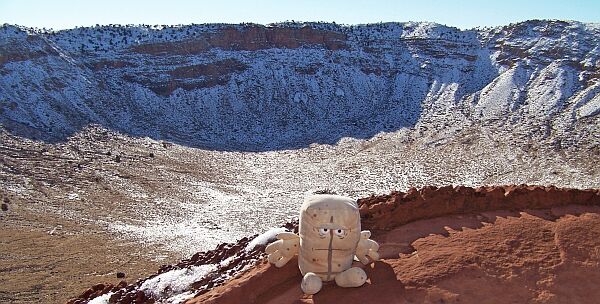
50,000 years ago, a huge iron-nickel meteorite, hurtling at about 40,000 miles per hour, struck the rocky plain of Northern Arizona with an explosive force greater than 20 million tons of TNT. The meteorite estimated to have been about 150 feet across and weighing several hundred thousand tons, in less than a few seconds, left a crater 700 feet deep and over 4000 feet across. Large blocks of limestone, some the size of small houses were heaved onto the rim. Flat-lying beds of rock in the crater walls were overturned in fractions of a second and uplifted permanently as much as 150 feet.
Today the crater is 550 feet deep, and 2.4 miles in circumference. Twenty football games could be played simultaneously on its floor, while more than two million spectators observed from its sloping sides.
In 1902, Daniel Moreau Barringer, a Philadelphia mining engineer, became interested in the site as a potential source for mining iron. He later visited the crater and was convinced that it had been formed by the impact of a large iron meteorite. He further assumed that this body was buried beneath the crater floor. Barringer was correct. The crater was formed by a meteorite impact, but what he did not know was that the meteorite underwent total disintegration during impact through vaporization, melting and fragmentation.
In 1903, he formed the Standard Iron Company and had four placer mining claims filed with the federal Government, thus obtaining the patents and ownership of the two square miles containing the crater. Barringer spent the next 26 years attempting to find what he believed would be the giant iron meteorite. Barringer never found what he was looking for, but did eventually prove to the scientific community that the crater was the site of a meteorite impact.
This text was taken from the Meteor Crater Website.
Today, Meteor Crater is a US National Natural Landmark. The Visitors Center includes the Museum of Astrogeology and an Astronaut Hall of Fame, gift shop and snack bar. Meteor Crater's Museum of Astrogeology provides visitors with a casual self-guided tour of exhibits and video presentations vividly portraying how the meteorite impacted, the devastation that resulted, and the significant role that the Crater plays in the study of earth and space sciences. A 1,406-lb. meteorite, the largest ever found in the area, is on display for visitors to view and touch. You can view the crater from three different look-out points, and a guided rim trail hike, weather permitting, is included in the price of admission, which runs daily from 9:00 am to 2:00 p.m. During our visit, the snow conditions prohibited a hike aroud the rim, so we hope somebody is going to add some pictures from the South Rim.

The Holsinger Meteorite is the largest piece ever found in the area. Weighting 1,406 pound it represents about 0.00003% of the original meteorite.

Bernd das Brot at the crater